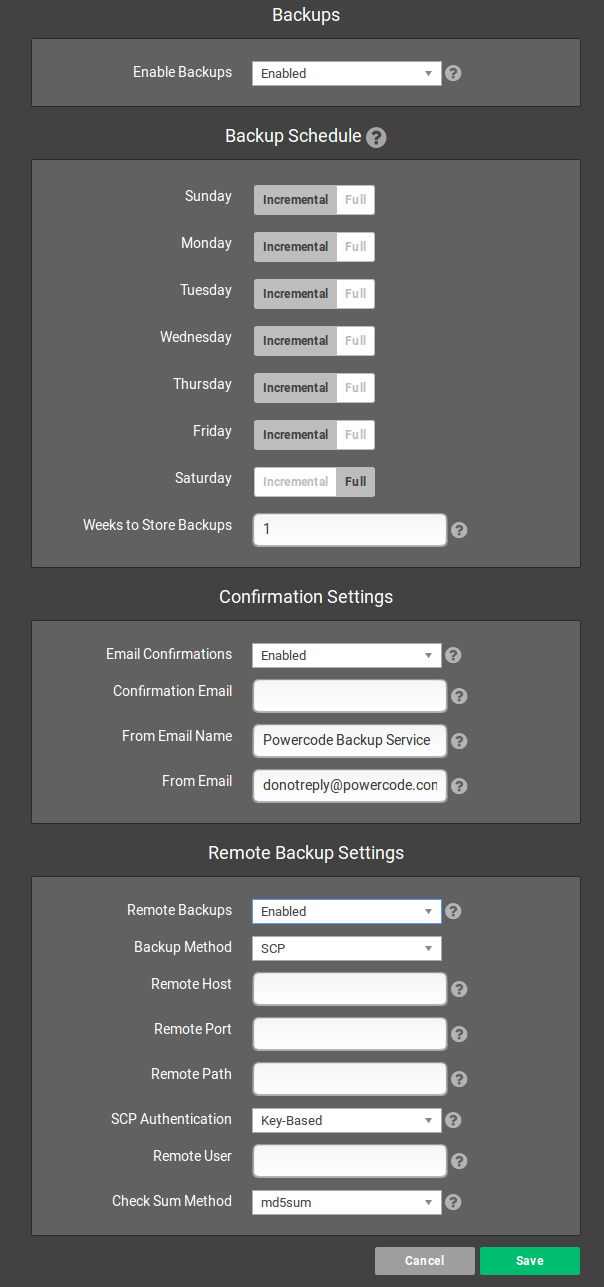Backup Overview
Powercode automatically backs up your database, uploaded files, and network monitoring data nightly. Personal settings and external backup options can be configured under Config → Backup Settings.
Important: Storing backups offsite is critical for maintaining your system.
We do not back up or store any of your data. If your server fails, all data will be lost.
This video contains basic information about backups as of July 17, 2017. See the bottom of this article for notes regarding later updates.

Enable Backups
Allows enabling or disabling automatic system backups. Disabling backups is not recommended except under extreme circumstances.
Backup Schedule
- Incremental / Full Toggle
- A full backup saves all files regardless of changes.
- An incremental backup saves only updated files.
- At least one full backup is required each week.
- Weeks to Store Backups
- The minimum retention period is one week.
Confirmation Settings
- Email Confirmations
- Daily confirmation emails notify you of completion status or offsite backup issues.
- Enabling this is strongly recommended.
- From Email
- If email confirmations do not arrive, ensure the address used is allowed by the remote service or local Powercode mail server.
Remote Backup Options
Powercode currently supports four remote backup methods:
Dropbox
Dropbox is a widely used cloud storage service. Setup instructions are available in this article. Dropbox offers the simplest setup, though large storage allocations may be costly.
AWS
Amazon Web Services (S3) provides a flexible, cost-effective solution for larger installations but requires additional configuration. After preparing your AWS environment, follow this guide to enable AWS backups.
SCP
Note: SCP backups do not use the SCP protocol; they currently use ssh2.connect. Some security configurations may interfere with this method.
SCP is commonly used for Linux-based remote storage but can be used with any SSH-capable server (example: rsync.net). Powercode supports both password-based and key-based authentication. Key-based authentication is recommended for security and reliability.
To validate SCP backups, you must be able to SSH from the billing server → backup server and from the backup server → billing server using the backup user. If this cannot be done, validation will fail and backups will not transfer.
With password authentication, files larger than 2GB are split into 1GB blocks, sent individually, and rejoined on the remote server. Key-based authentication removes this size limitation. After transfer, an MD5 checksum confirms data integrity.
FTP
FTP uses unencrypted file transfer and is the least secure option. Authentication is completed with a username and password.
Files over 2GB are split into 1GB segments. To reassemble them during restoration:
cat 20130401.Mon.Full.tgz.a* > 20130401.Mon.Full.tgz
